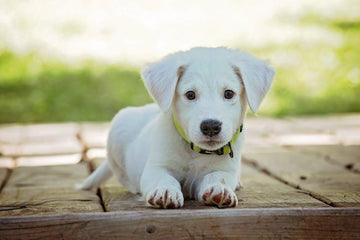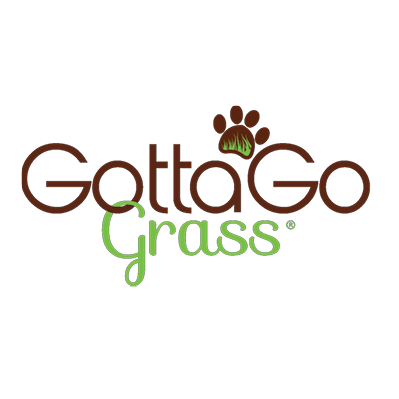
Did you know that just over 38% of US households have a dog? The nation loves pets, and none are cuter than the youthful puppy. But if you are thinking of getting one, do you know how to keep them well-behaved?
It may seem impossible at some points, but all dogs can be trained. Below, we give the essential dog training tips for your puppy.
At What Age Should I Begin Puppy Training?
One of the first things to understand when you begin training a puppy is to train it from the first day. While its puppy behaviors may seem cute, think about how they will be when the novelty wears off and your dog is grown. Therefore, your dog needs to know what is acceptable from the start.
Of course, this takes a lot of time, effort, and patience. Don’t let your dog wander around the house causing trouble. Instead, begin setting their boundaries and behaviors from the outset.
The Three Training Methods
Most training methods can be broken down into three main techniques. Once you have these, you can adapt them and use them to train your dog or they can help when teaching tricks.
Luring
Luring is a technique that uses a treat or other type of food. This entices a dog into performing an action or acting in a certain way.
The treat is usually held in front of the dog's nose to guide the pet's movements. Once the desired action is complete, the dog is rewarded with the treat.
There are different types of lures including food, toys, or even a favorite person or another dog. Always using something the dog is motivated to engage with is of the utmost importance. The treat or lure should guide the dog in helping understand the expectations upon them.
Capturing
Capturing is a training method used to teach a dog a new behavior. It does this by highlighting the exact moment the dog performs the desired action. The idea is to "capture" a behavior that the dog is already naturally inclined to do, and then reinforce it so that the dog will know it is good and repeat it.
Marker
A marker is a signal or cue that informs the dog it has performed good behavior and that a reward is coming. It serves as a stopgap, letting the dog know they have done something right. The marker can be a verbal cue or a visual signal.
Choosing a Treat
Many of these training exercises require the use of a treat. As you will be using them a lot, make sure it is healthy and nutritious for your dog. Try a few different brands and types to see which they like best.
When each exercise is mastered, you can begin to fade these out. Don’t do it immediately, but do it a few times without rewarding the dog, before moving on to getting rid of them altogether when the dog knows the command.
Toilet Training
Toilet training is one of the most important elements you can teach, for obvious reasons. You don’t want a house or yard filled with urine and excrement. Luckily, puppies are generally clean animals and will soon toilet train with the right instruction.
Start by establishing a routine. Set an alarm so you can take the puppy outside to the designated bathroom area at regular intervals. This may even be after they have performed key functions, such as eating, sleeping, or playing.
Choose a very specific, easy-to-understand command. A word such as “toilet” will suffice. Use the same word every time so the puppy learns to associate it with going to the bathroom. Always make sure you provide praise when it goes and give it a treat.
One of the key things to be alert for as an owner is the puppy's body language and behavior, as it may give you clues that it needs to go outside. Sniffing around, circling, or whining are all signs that a puppy may need to go to the potty. As they have very small bladders, this could be frequent.
You need to be patient, as this process takes time and accidents will happen. Don’t chastise puppies for mistakes but go back to reinforcing the right behaviors. You may find at some points the training seems to be going backward but with consistency, it will work.
Teach Them to Use a Crate
At the outset, a cage can look quite intimidating. The prison-like bars and confinement may seem like something animal lovers should be against. Yet a crate is so much more, offering a private and safe space for your pets and providing a dog its own section of the house.
There is also nothing wrong with having an animal in a crate, as long as they are not there for a long time. All dogs, of any age, should have the opportunity to visit the toilet, exercise, and interact.
The best way to introduce a crate to a new puppy is to bring it in gradually. Place it somewhere your dog may visit frequently and leave the crate door open.
You can leave treats and toys inside to entice the puppy to the area. Leave the door open so it can come and go.
It is also a good idea to feed a new puppy in the crate. When it becomes comfortable, start placing its food bowl inside and closing the door while it eats.
Start crating the puppy for short periods while you are home, increasing the duration over time. Be patient with the dog, and don't force it into the crate if it resists. Over time, you can increase the amount of time it spends in there bit by bit.
Getting Their Attention
One of the basics is getting your dog's attention. Without this, all other behavior training will be futile. The dog needs to know that when you shout a command, it returns and stops what it is doing.
This is another tactic that starts with the use of a treat. Hold it in your hand and show it to the dog, without letting them have it.
Say "attention" clearly and firmly. You can then use the treat to guide the dog's nose to you, getting them to make eye contact.
Once you and your pet have eye contact, you have their attention, and you should give it the reward and praise. Repeat this several times a day, enforcing the behavior. Each time, increase the amount of time the dog maintains eye contact with you before receiving a treat.
When the dog seems to be getting the hang of this, you can try it elsewhere. Perhaps move to the yard or other spaces outside the house. The real test will be when other dogs are around, or your pup is engrossed in play.
Recognizing Their Name
Teaching a dog to recognize its name is one of the simpler tasks. You can start by saying your dog's name in a clear and upbeat tone every time you interact with them. Try repeating their name in different contexts and situations.
When your dog looks at you or acknowledges you when their name has been said, reward them with a treat. Gradually, up the ante and increase the difficulty of the exercises by calling their name when they are doing something else.
Come Here
The "come here" command is not just one for good behavior. It can save your dog's life. You don’t want to be the person whose puppy runs off and gets lost or has a fate even worse befall it.
Once again, start with a treat. Call the dog's name to get its attention, then give the command "come." Make sure it is clear and positive and show the treat as you do so.
As soon as the dog comes to you, give it the treat and praise it. Repeat the process several times a day, gradually increasing the distance between you and the dog. When you feel confident, you can move from the home to outdoor areas with more stimulation, such as the park.
Make sure you add a release command once the dog has come and eaten its treat. This can be as simple as telling it to “go” and throwing its ball or stick.
Teaching Your Dog to Socialize
Teaching a dog to socialize will be one of the harder behaviors, but well worth the effort. The reason for this is that dogs, like people, have personalities. Some may find socializing easier than others.
It is also not only your dog you have to contend with. You will be teaching your pet to encounter a wide range of animals, which could involve shy dogs, aggressive dogs, and all the ones in between.
The best tactic is to start early in the puppy's development. This can be from three to fourteen weeks of age.
At this point, the puppy should also be quite receptive to new experiences. Don’t just introduce them to dogs, but also to new people and different animals.
Combine this with walks to different environments. Take them to places such as the park, shops, busy roads, and other houses. All of this helps them build their confidence.
While in these environments, use the capture technique. Whenever you see positive behavior, reward your puppy. Remember that puppies are still learning so you will need to be patient and it won't always go right.
This is where training classes are worth the money. Not only do you get assistance, but your dog gets to visit other dogs and people in a controlled setting.
Sitting
This is the classic dog trick, but it is more than a command. It can prevent your dog from getting excited, particularly useful in new social situations. You don’t want them jumping up at guests and passers-by.
Luckily, teaching a dog to sit is a basic command. Start with a treat in your hand and hold it in front of your dog's nose.
Slowly move the treat over their head and towards their tail, allowing them to follow the treat with their nose. This should cause them to sit.
As soon as your dog's back end makes contact with the floor, say the word "sit" in a firm but friendly tone, and give them the treat. Repeat this process several times, using the same signals and commands.
Try to practice the "sit" command in different environments and situations to help your dog generalize the behavior. Keep practicing and reinforcing the behavior regularly, before phasing out treats once the dog gets the hand of the command.
Not to Chew Items
Dogs are prone to chew items, and it is encouraged for the health of their teeth. However, it can be a costly annoyance when they chew the wrong things. Furniture, household items, and important documents can soon be rendered unusable.
Start by providing appropriate chew toys. They should be the right size and shape for your dog. Make sure you switch them to keep the interest going.
If your puppy starts chewing on an item that isn’t a toy, redirect their attention to a toy instead. Prevention is the best cure when training in this behavior. Keep items you don't want your dog to chew on out of reach or make them less appealing by using bitter pet-friendly sprays.
Further Dog Training Tips
It is the use of a reward and consistent behavior reinforcement that will train your dog. There will be mistakes and things will go wrong. But as your dog matures, it will come to understand the value of these dog training tips and perform them naturally.
If you want to get a head start on training, then our dog grass pads are the perfect aid. Potty training has never been easier than with this mobile, natural grass solution. Visit Gotta Go Grass to read more about how the product works and order yours today!




